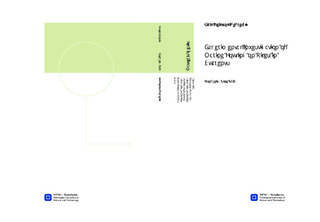| dc.description.abstract | Various effects of marine fouling on piles have been addressed through a literature study and an experimental investigation. The experimental investigation was conducted on circular cylinders in steady current at subcritical Reynolds numbers. Hard marine fouling was modeled on the surface of three different cylinder models using sand and gravel particles with relative roughnesses k/D = 0.01, 0.02 and 0.07. In addition, one cylinder model was kept smooth, while one cylinder model was covered with artificial fur to simulate soft marine fouling. The drag and the wake velocity were measured, and in addition a flow visualization was carried out. The cylinders had a free end and the tests were performed in a free surface flume tank.On the cylinders covered with artificial hard marine fouling, the mean drag was found to increase with increasing surface roughness. The mean drag of a cylinder covered by artificial soft marine fouling was almost three times the drag of a smooth cylinder with the same diameter. A cylinder with a diameter of 0.042 m covered with artificial soft marine fouling, was found to have approximately the same drag as a 0.10 m smooth cylinder.The streamwise velocity at points along the centerline of the wake was measured using the optical technique Laser Doppler Velocimetry (LDV). In the case of hard marine fouling, increasing surface roughness was found to increase the mean velocity near the cylinder, and to decrease the mean velocity further away from the cylinder. The results also indicated that increased surface roughness decreased the Reynolds number dependence of the wake closure length (the region where the mean velocity is negative).The presence of soft marine fouling was found to have a large impact on the mean velocity in the wake. Here, the wake closure length was found to be approximately 3.6-3.7 times longer than for a smooth cylinder.The flow visualization showed that the Strouhal number was reduced from approximately 0.19 to 0.16 when hard marine fouling was introduced. For soft marine fouling, the Strouhal number was approximately 0.11. The visualization also supported the findings from the LDV tests.It was concluded that marine fouling could have large consequences for both the forces on a circular cylinder and on the flow around it. The effects of soft marine fouling were found to be more significant than the effects of hard marine fouling for all parameters in the investigation. | nb_NO |

